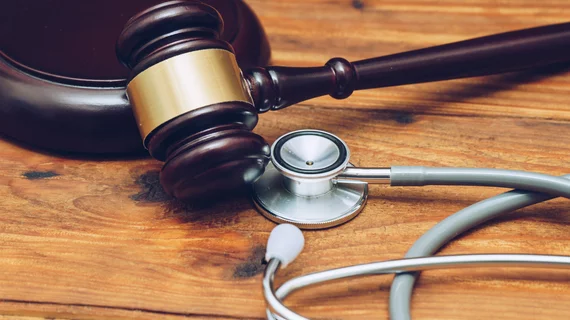How to prepare for a COVID-related medical malpractice crisis
The ongoing pandemic has caused countless challenges for the U.S. healthcare system, leaving patients unsettled and physicians tired and overworked. According to a recent commentary published in JAMA, another significant challenge could be approaching that could make things considerably worse: a medical malpractice crisis.
“Physicians, hospitals and nursing homes, along with manufacturers of vaccines and therapeutics, are apprehensive about potential liability during the pandemic,” wrote lead author William M. Sage, MD, JD, a professor at the University of Texas at Austin’s Dell Medical School, and colleagues. “Some healthcare organizations are asking patients to acknowledge and explicitly assume COVID-19 risks before receiving care; others have requested and sometimes have obtained legal immunity from tort liability through state legislation or executive order.”
Sage et al. noted that recent medical malpractice crises resulted in liability insurance coverage becoming both more available and more affordable. Premiums for medical professional liability (MPL), however, skyrocketed from 2001 to 2006, declined for several years and now appear to be rising yet again.
Hospital leaders looking to “protect their institutions against the unlikely event of an extremely high-damage award,” the authors wrote, “may again find excess coverage unavailable or offered only at many times the accustomed price.”
If malpractice insurance does rise to the point that healthcare providers can’t keep up, cardiologists and other physicians could find themselves on shaky ground. However, the authors emphasized, “there is a better path.” Starting in 2002, the University of Michigan Health System was able to dramatically limit the malpractice-related pressure being felt by its providers—and it made a huge difference.
“Rather than waiting for complaints and lawsuits, the health system’s risk management department put in place a quick-response system for addressing unfavorable patient outcomes,” the authors explained. “Seizing control over the timing addressed persistent concerns about delayed claims among both risk managers and clinicians, reduced financial uncertainty by promptly resolving most well-founded claims without litigation, and shifted the basis of claims management from ‘legal defensibility’ to patient safety. This resulted in quicker resolution of claims and decreases in lawsuits and costs, the latter driven in large part by a reduction in the high-dollar settlements that obligate most hospitals to maintain excess coverage.”
The school’s actions resemble the communication and resolution programs (CRPs) of today. CRPs focus on transparency, proactive actions, patient education, collaborating with other providers with necessary and more. By approaching medical malpractice in this way, the authors observed, it may be possible to “head off the worst consequences of a hardening insurance market.”
“Applying CRP principles during the pandemic could both improve quality of care and avert high-dollar claims, which in turn could potentially reduce medical malpractice insurance costs,” the team wrote. “Structured communication, including via telehealth, could convey the uncertainty clinicians face in determining what care might and what care should not be deferred during the pandemic, as well as the potential consequences of delay. When outcomes related to COVID-19 are less than desirable, transparency helps temper the unrealistic expectations that contribute to malpractice claims and substitutes compassion and shared purpose.”
If COVID-19 does lead to another medical malpractice crisis, providers that have already taken serious steps to modify patient care and revamp their behind-the-scene policies will be at a huge advantage. Providers that did nothing, on the other hand, would be in for a 2021 that makes 2020 seem simple by comparison.
Click here to read the full commentary.

